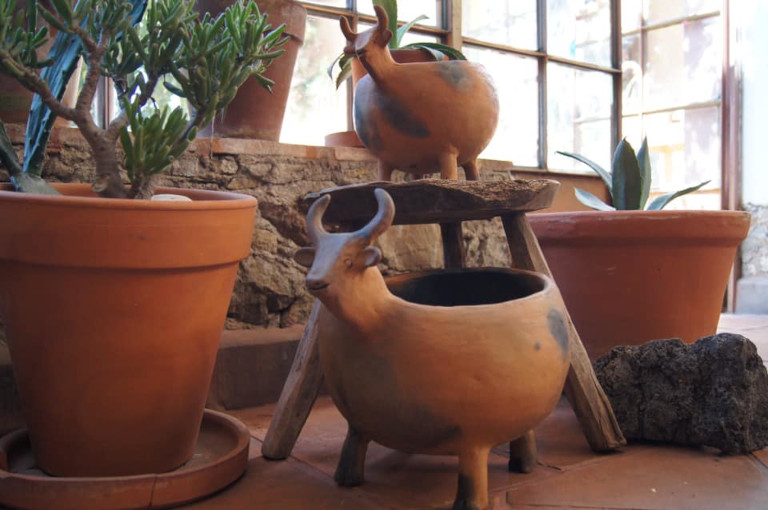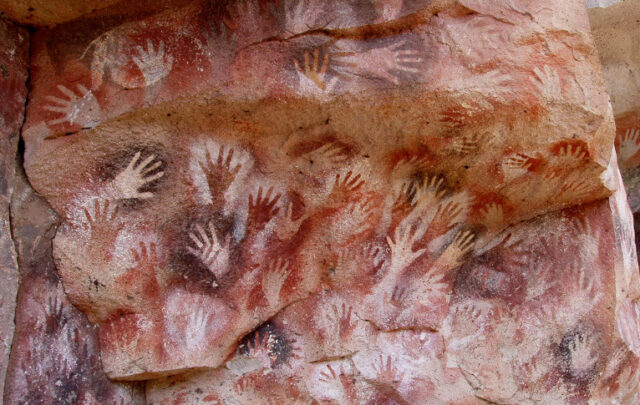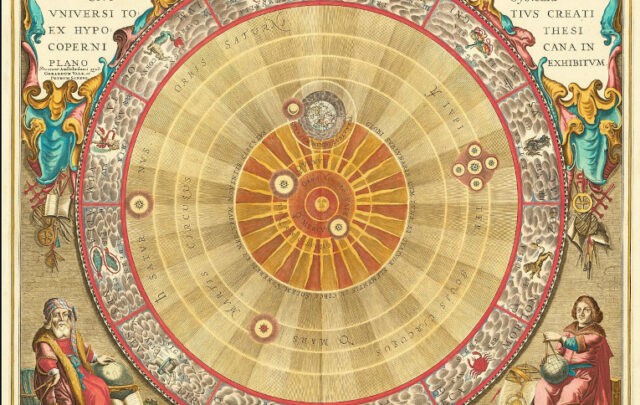This piece was originally published in Spanish in La Jornada, Part I October 10, 2023; and Part II October 24, 2023 | Victor M. Toledo. Translated into English by Jane K. Brundage.
If the modern world is in crisis, then let us turn to its antithesis, the traditional world, in search of keys, clues, beacons.
I.
Two recent events cross like lightning and are immediately connected. On one side, the visit last Sunday to the Purépecha indigenous community of Zipiajo, in Michoacán; and on the other, the words of the President of Mexico on the morning of October 5 in response to a reporter’s question about why he knelt in the ceremony and ritual held in the Zócalo on the first day of his government. Both events inexorably refer me to the thesis that we have raised, but insufficiently demonstrated, that in the indigenous or native peoples of the world lie the keys to get out of the tremendous environmental and social crisis of industrial civilization, a theory that seems completely feasible for Mexico’s situation.
The theory springs from simple reasoning. If the modern world is in crisis, then let us turn to its antithesis, the traditional world, in search of keys, clues, beacons. This does not mean, of course, a romantic return to the past, since the traditional world is not a memory, it exists today, which is due to nothing less than the fact that it has achieved something rare:
resisting, overcoming and coexisting with the modern world.
Whether in silent, subtle resistance or in open confrontational rebellion, the traditional world has given rise to local-scale communities and even regions with clusters of communities. In today´s world, seven thousand indigenous peoples are distinguished by their language, living in 80 countries; collectively, they possess land equal to one-fourth of the planet!
Ignored, denigrated, marginalized, shunted aside and/or exploited by the modern vision, considered for centuries as soulless beings by religion, and as primitive, archaic and backward societies by Eurocentric and racist science, we had to wait for the arrival of a new generation of researchers (ethnologists, anthropologists, ethnohistorians, ethnobiologists and ethnoecologists) to enlighten us about the existence of a set of values, principles, knowledge and practices among indigenous peoples that are not simply admirable but of enormous value in the perspective of a civilizational change. Dazzled, nearly blinded, orthodox intellectuals and researchers never dared to delve deeply into the world of tradition which, as we will see, brings together elements of great interest in terms of social organization, economy, cultural reproduction, as well as the environment, the ethical and the political.
We visited Zipiajo to observe, photograph and film its natural pottery, its manufacturing and the firing process. Zipiajo is an indigenous community of about 2,800 inhabitants, in the Ciénega de Zacapu bioregion located one hour from Morelia. The community of Zipiajo is special on several fronts. The enormous talent of its artisans — a practice exclusive to older, mature and young women — is certified by numerous state and national awards, both in textiles and pottery. Men, for their part, concentrate on food production with the cultivation of milpa (corn, beans, squash and more) and with animal husbandry, and many young people go to work outside the community both in Mexico and in the United States.
.jpg)
Church of San Pedro in Zipiajo, Michoacan.
Source: Facebook.
Surprising, too, is the majesty of its church, which seems out of proportion to the size of the town. Similarly, its central square with a kiosk and impeccable trees. Also noteworthy are the well-painted facades of many of the houses with their metal doors, finishes and quality materials. Abounding on the streets are cars and trucks, not new but recent.
Crowning the above, 85 percent of the inhabitants of Zipiajo continue to speak Purépecha. It is worth listening to the youngest children speaking their language as they play in the street. This indicates that parents maintain their ethnic pride and transmit Purépecha to their children as a basic or primary language before Spanish.
Everything indicates that we are in a traditional town that has successfully faced globalization. All material indices have improved between 2010 and 2020 (https://rb.gy/feqv4), including the number of homes with a refrigerator, washing machine, television, car, cell phone and Internet.
Our hosts emotionally relate a fascinating anecdote.
After the morning mass and before receiving us, the parishioners decided to take San Pedro, patron saint of the town, and San Isidro Labrador out of the church, to lead a caravan through the surrounding hills and forests to ask for rain. As in the rest of the country, drought affects this region and it is necessary to confront it. It is now three o´clock in the afternoon and dozens of families continue walking the mountains, as Nana María and Tata Daniel’s daughter shows us on her cell phone, tuning in to the event broadcast on Facebook in real time.
II.
To the surprise and bewilderment of racist intellectuals, blind heirs of the 19th century European scientists, indigenous peoples possess intricate systems of thought, views that run against the current of what prevails in the modern world, today in crisis, and that serve them to live and survive the attacks of globalization. Indigenous peoples commonly possess concepts that operate as guides for the knowledge of life.
We had to wait for the formation of hybrid intellectuals, individuals capable of being inside and outside of their cultures, of looking from the inside and knowing how to translate that view to those of us outside. Of the various existing accounts, I am going to focus on the work K’anel: functions and social representations in Huixtán, Chiapas (2010), written by Manuel Bolom Pale, award-winning Tsotsil writer. With a degree in social psychology, Bolom Pale is a professor at the Intercultural University of Chiapas.
Other similar testimonies, although carried out from external perspectives, are those by Pedro Pitchard on the Tseltals, and Carlos Lenkesdorf on the Tojolabals. In his bilingual book, Bolom Pale presents a detailed and profound review of a concept that functions as a philosophical pivot.
“For the original peoples, the K’anel is vitality and the hub, nucleus or essence of everything that exists; it acts as a driver of events based on emotion, knowledge, memory, will, language, and individual and collective identity.”
Its centrality in the life of that culture attests to a term that is as abstract as it is concrete, and testifies to the enormous complexity of the indigenous worldview, a trait that is present in the world´s 7,000 original cultures.
What is K’anel? It is, above all, an attitude acquired with love, acceptance, assimilation and the pleasure of being part of a collective, of a communal entity. As a principle, as an ethical code, the K’anel serves as foundation so the social structure can be based on values of honor, complementarity, solidarity, brotherhood, loyalty, and respect for oneself and for others. It regulates the individual attitudes and behaviors that facilitate community balance. It is no coincidence that the common greeting used by the Tsotsiles is:
How is your heart?
It is a question that contains the desire to look into something deeper or more intimate, a guarantee of an interpersonal identity.
But the story does not end there. K’anel, in turn, is in close relationship with two other concepts of Tsotsil philosophy:
Ch’ulel and Lekil Kuxlejal.
The first reveals the maturity of the individual:
“Ch’ulel is the formation of the subject, as well as the nature of the experience, since it enables the flowering and maturing of human awareness for its daily coexistence with its entirety.”
The second, Lekil Kuxlejal, is nothing less than the buen vivir, or good living, hurled into the world as a concept antagonistic to development during the political rebellion of the Andean peoples of Bolivia and Ecuador, and reflected in their new constitutions. This concept has been found in other cultures of the American Continent, such as the Kolla of Argentina, the Mapuche of Chile, the Mochica of Peru, the N Gäbe of Panama; the Kogis, Arawakos, Kankuamos and Wiwas, guardians of the Sierra Nevada de Santa Marta, Colombia; the Araona of the Bolivian Amazon, and the Murui and Cofán of the Colombian Amazon.
We will see in the near future how buen vivir is present in all original cultures as a common trait, as a universal concept of the traditional world. This concept speaks of a full life:
the way of living in communities, in harmony with nature, and in balance in individual and collective relationships.
This framework of abstract visions, the kosmos — articulated with the body of knowledge, or corpus, and with productive practices, or praxis — is what explains the long presence of cultures; its enormous capacity for resistance, its resilience. Projected into modernity´s choppy sea, this k–c–p complex, which we can describe as traditional wisdom, is in complete contrast to the contrary values of the industrial being. Individualistic, competitive, materialistic, with little or no memory, without roots in the territory and with his back turned to nature, the modern citizen is, today, in his subtle solitude, the one who has distorted the world with his vote or his opinion.
The great paradox is that, in precisely the societies falsely considered to be the most backward, archaic, unchanging, etc., is where today we find the keys to awakening from the dream of Western modernity (Luis Villoro). Everything we have briefly reviewed here becomes emancipatory. As Noam Chomsky states, today the indigenous peoples are our only hope for surviving as a species (https://ecologise.in/2017/11/04/noam-chomsky-indigenous-people-are-the-only-hope-for-human-survival/).





